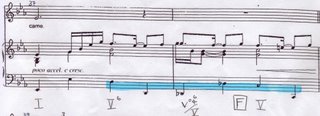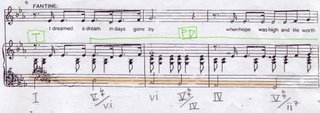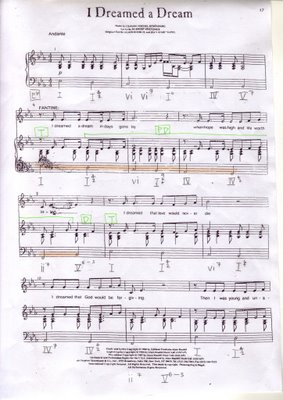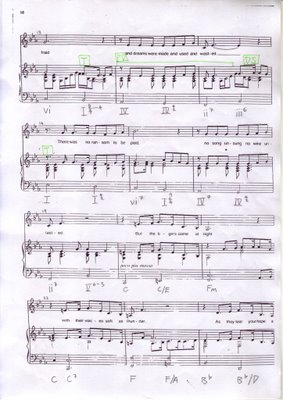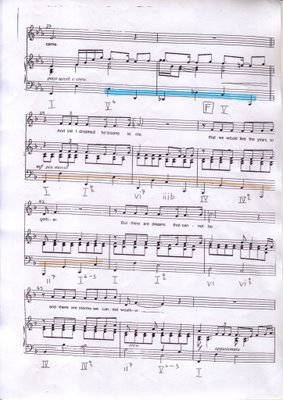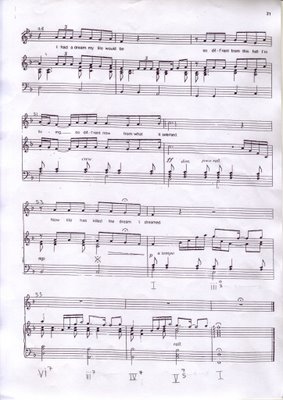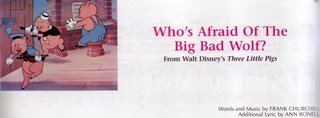
Since time immemorial, songs from Disney cartoons have been my all-time favourite. They are always easily recognisable with their distinct and special tone colour which sounds almost magical, and at the same time the melodies are very simple, memorable and easy to sing. This fascinating "Disney sound" prompted me to take a closer look into the musical details of Disney songs. Hence, I have selected Walt Disney’s very first sing-a-long classic "Who's Afraid of the Big Bad Wolf" for analysis.
Background
This song is taken from Walt Disney's Three Little Pigs which was released in 1933. Just like most Disney cartoons, they have 3 different dimensions, viz. Words, Music, and Animation/Story. They are arranged in increasing order of importance. This is illustrated in this case where the story of the Three Little Pigs was written first, then Frank Churchill wrote the music in 1930, and the words were added much later by Ann Ronell. This is unlike most other films and musicals in those days where the music dimension took precedence.
Form
The structure of this song is generally A B B' A. Although there are no repeats for A, it is still in the simple ternary form. The reprise is an exact repeat of A as indicated by the Da Capo direction at the end of B' with no changes in key, texture or melody. The middle section takes on a different theme and key from A, like all simple ternary forms where the middle section does not develop the ideas in A, but has a totally different scheme to show contrast.
Harmony and Tonality
This song starts in Gmaj and modulates to its dominant Dmaj in the middle section.
Fig 3a
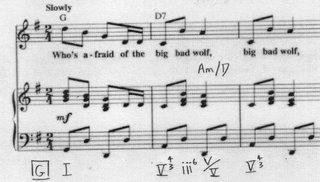
In bar 2, instead of a simple D7(V7) chord as suggested by the writer, more than that is going on in the harmony (see Fig 3a above). A slight touch of minor chord iii is used followed by tonicization of V. This progression is one example which accentuates the fairytale-like "Disney sound" which I mentioned earlier.
Fig. 3b
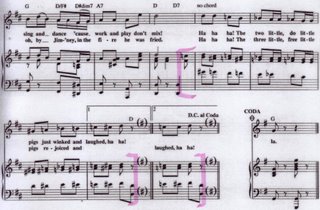
For the transition of B to B' and B' to the reprise, Churchill makes use of a short passage of descending and ascending chromatic harmony (see Fig. 3b above)
Melody and Phrasing
Fig. 3c

Fig. 3d
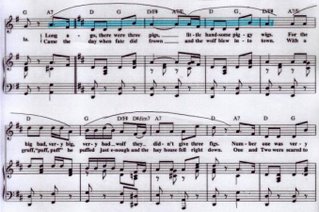
There are two main melodic ideas in this song. These can be seen in blue in Fig. 3c and 3d. The melody is built mainly on repetitions. The phrasing of the melody in this piece is quite interesting.
As seen in Fig. 3c, it has a 'l' 's' 's' sentence structure instead of the 's' 's' 'l' structure we commonly see. It seems as if this is done to accommodate the three-word motif "big bad wolf", but we have to remember that the music was written first before the words.
In the second sentence of Fig. 3d, we see an asymmetrical sentence of approximately 1 bar followed by 3 bars. Aurally we would expect it to be 1+1+2 but it turned out 1+3.
Accompaniment
The LH of the accompaniment in sections A and B differs. In A, the LH uses the alberti bass figuration for the bass (see Fig. 3c). Whereas for B, only 5ths and 8ves of the chord are played on each downbeat (see Fig. 3d). This further shows the contrast between A and B.
